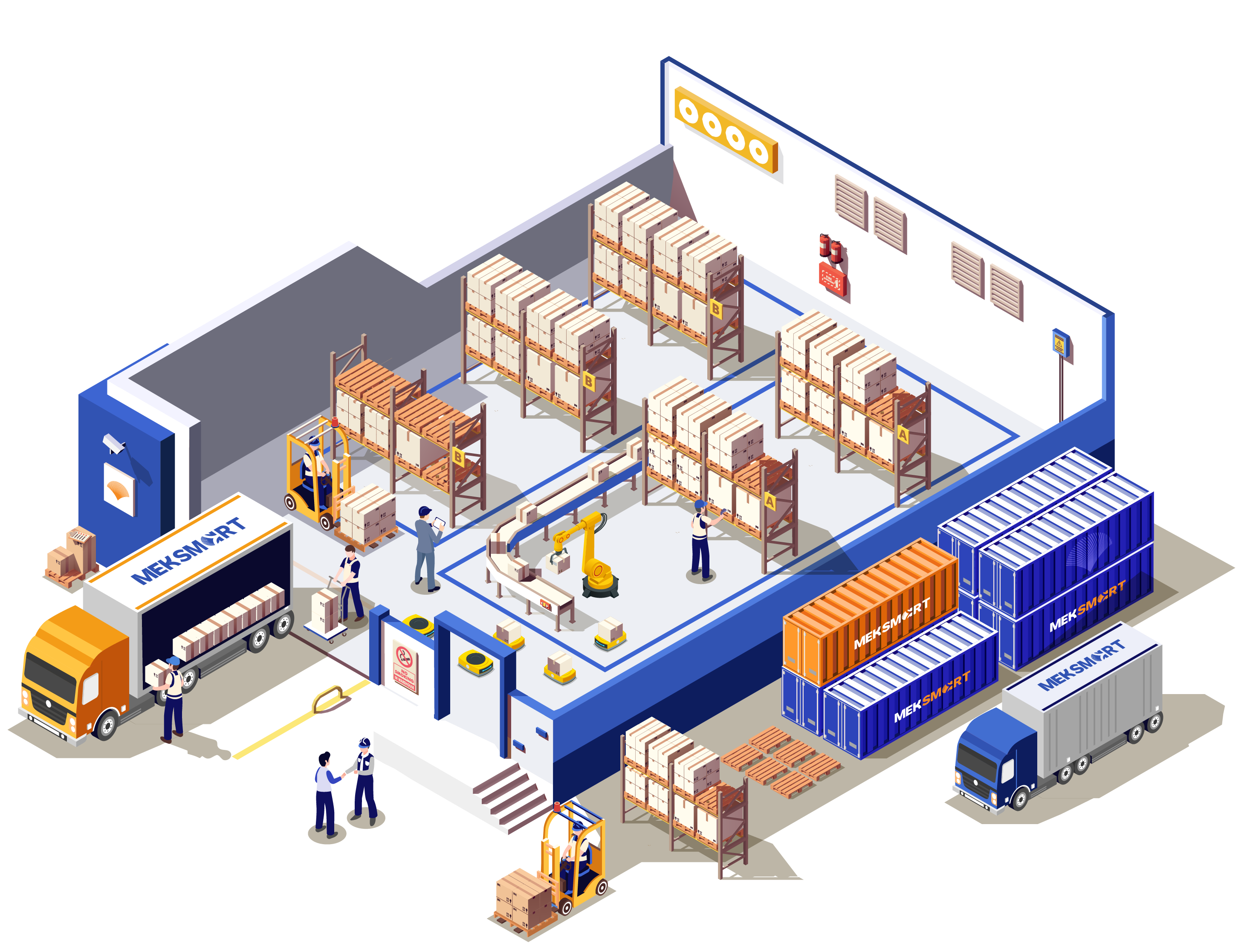MEKSMART
GENERAL NEWS
Author: TIÊN HUỲNH
Update: 19/09/2022
CROSS-DOCKING IN WAREHOUSE OPERATIONS

When it comes to freight, everyone is probably familiar with Drop-shipping (delivery method does not include shipping) - this is the preferred form for individuals and organizations selling online.
However, perhaps you do not know yet another type of transportation that fully supports the need to send large quantities of goods without requiring large warehouses. This method also helps to avoid inventory and excess stock, save warehouse costs, and optimize delivery time.
This method is called cross-docking. Let's learn about cross-docking with Meksmart in today's article.
What is Cross-Docking ?
As mentioned above, cross-docking is a method of delivering goods received at a distribution center or warehouse. Products will not need a warehouse to store, but always in a state of readiness for delivery to retail points.
This distribution system needs smooth coordination between the receiving and delivery departments. Cross-docking also helps save transportation costs in logistics significantly. However, businesses today are still facing some difficulties when implementing cross-docking.
Most supply chain documents agree that cross-docking is not only synchronized with the inbound/outbound logistics process but is also managed by the same people with the same operational efficiency. . This is often not the case in practice.
The cross-docking supervisor will not be involved in the inbound/outbound logistics process. In addition, the way metrics are used can only tell about internal efficiency, such as the distance that processing equipment in a distribution center can travel.
What makes cross-docking and traditional warehouse management different?
For traditional warehouse management, warehouses must ensure the correct quantity of goods until customers have new orders. After that, the goods will be selected according to the requirements, then will be packed and shipped to the customer.
When a new order is updated on the warehouse, the order must be moved to the warehouse, and wait until the customer confirms it before being distributed.
Regarding cross-docking, customers will come to the warehouse for goods information. These products will not need to be stored in the warehouse and will be shipped to the receiving location immediately. Customers will need a shipping time for the cross-docking model.
However, the process will be detailed with a detailed schedule to ensure strict and sure management. If this model is implemented correctly, the burdens of warehousing and transportation costs will be lifted off the shoulders of the management ranks.
The importance of cross-docking
In warehouse operations, cross-docking has a number of benefits as follows:
- As you know, storing goods in warehouses for stable and high-demand items is often wasteful. By minimizing stock holding, cross-docking reduces the cost of storing goods significantly.
- Cross-docking reduces transportation costs for small retailers/shippers. For example, a retailer may receive shipments directly from the manufacturer using single-shipment and under-vehicle transportation.
This situation is very common because small retail stores only receive a sufficient amount of goods to keep in stock. However, this situation increases the cost of input transportation because transporting many times will consume more fuel and more labor.
Cross-docking quickly gathers shipments of goods together for transportation, helping to optimize input transportation costs as well as making it easier for retailers to receive goods.
- Save on loading and unloading costs because you don't have to store a lot of goods in the warehouse.
- The movement of goods in the supply chain is smooth and fast, no more worries about storage and inventory.
Epilogue
Above is all information about cross-docking in warehouse operations. With the benefits of saving transportation costs, labor and time, cross-docking is an optimal choice for individuals and small business organizations, replacing the drop-shipping model.







